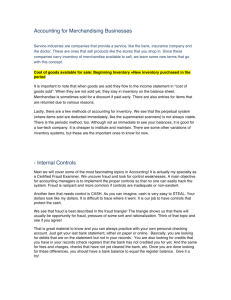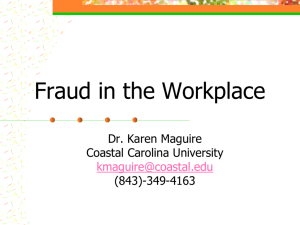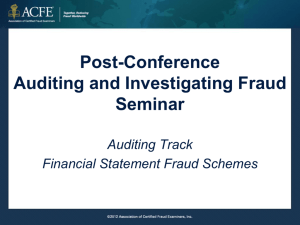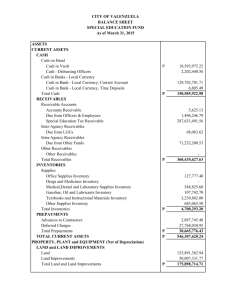Document
advertisement
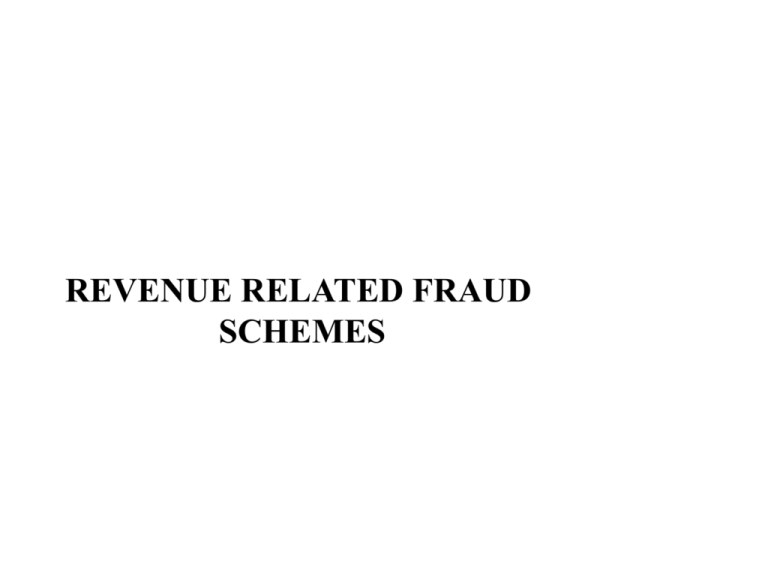
REVENUE RELATED FRAUD SCHEMES • What are the most common accounts manipulated when perpetrating financial statement fraud ? The most common accounts manipulated when perpetrating financial statement fraud are revenues and/or receivables Over half of all financial statement frauds involved revenues and/or accounts receivable accounts • What are some of the most common revenue related fraud schemes? Common Revenue-related Fraud Schemes: •Related-party transactions •Sham sales •Bill-and-hold sales •Side agreements •Consignment sales •Channel stuffing •Lapping or kiting Other common Revenue-related Fraud Schemes: • Re-dating or refreshing transactions • Liberal return policies • Partial shipment schemes • Improper cutoff • Round-tripping • What are six categories of revenue related fraud? • 1.Analytical symptoms 2.Accounting or documentary symptoms 3.Lifestyle symptoms 4.Control symptoms 5.Behavioral and verbal symptoms 6.Tips and complaints Income Statement • When inventory is overstated, then… Gross Revenue (Sales) Are not affected Sales Returns Are not affected Sales Discounts Are not affected Net Revenues (Sales) Are not affected Cost of Goods Sold Is understated Gross Margin Is overstated Expenses Are not affected Net Income Is overstated • What are the most common inventory fraud schemes? • Most common inventory-related fraud schemes: • Double counting •Capitalizing •Cutoff problems •Overestimating inventory •Bill-and-hold sales •Consigned inventory • What are some types of Financial Statement Fraud? 1. Understating liabilities 2. Overstating assets 3. Inadequate disclosure • Understating Accrued Liabilities Common accrued liabilities accounts: •Salaries payable •Payroll taxes payable •Rent payable •Utilities payable •Interest payable • Underrecording Future Obligations Future obligations examples include: • Warranty • Service Obligations • Abnormal Analytical Symptoms Unrecorded Notes/Mortgages: –Unreasonable relationship between interest expense and recorded liabilities –Significant purchases of assets with no recorded debt –Recorded amounts of notes payable, mortgages payable, lease liabilities, pension liabilities and other debts are too low • Accounting or Documentary Symptoms – Photocopied records where originals should exist. – Unusual discrepancies between the entity’s records and confirmation replies. – Transactions not recorded in a complete or timely manner or improperly recorded amounts. – Balances or transactions that lack supporting documents – Missing documents. – Unexplained items on reconciliations. • Overstatement of Receivables and Inventory Cover thefts of cash or other assets by overstating receivables or inventory
